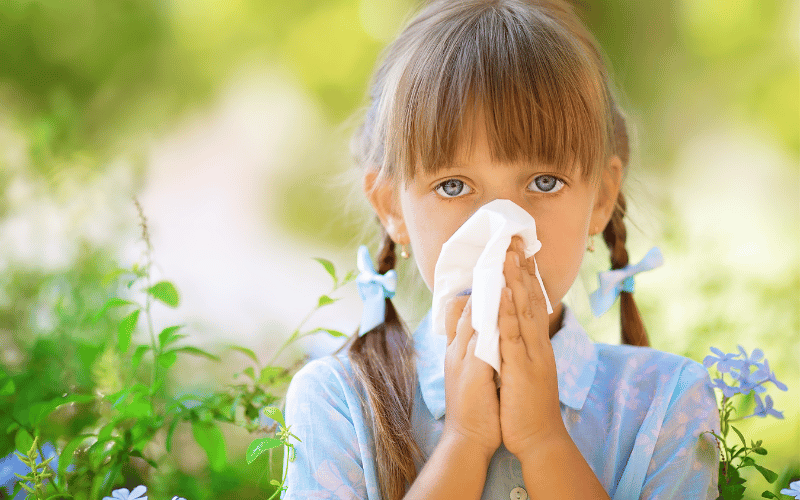The Growing Concern of Sesame Allergy in Children
In recent years, there has been a noticeable increase in sesame allergies among children. This food allergy has become a significant health issue that parents and caregivers should be aware of, to ensure their children’s safety and well-being.

Recognizing the Signs of Sesame Allergy in Kids
Children with a sesame allergy can exhibit various symptoms. Common indicators include hives, swelling, difficulty breathing, abdominal pain, and vomiting. In more severe instances, anaphylaxis may occur, a life-threatening reaction that necessitates immediate medical intervention.
Effective Management of Sesame Allergy: Ensuring a Safe Environment for Your Child
To minimize the risk of accidental exposure to sesame, it is crucial to read food labels carefully and maintain an allergen-free environment for your child. Inform family members, friends, and school personnel about your child’s allergy and the importance of strict adherence to allergen avoidance measures.
The Importance of Allergists in Diagnosing and Addressing Sesame Allergy
Seeking the expertise of an allergist is vital for obtaining an accurate diagnosis and devising an effective treatment plan. They can conduct various tests, such as skin prick tests and blood tests, to verify the presence of a sesame allergy. Additionally, your allergist will guide you in managing your child’s condition and provide crucial information on emergency care.
New Treatment Options for Sesame Allergy in Children
Innovative advancements in allergy research have resulted in the emergence of novel treatment approaches for sesame allergy. One such example is oral immunotherapy, which involves a gradual introduction of sesame under strict medical supervision, potentially enabling the child’s immune system to tolerate the allergen over time.
Preventing Cross-Contamination: Practical Tips for Parents
To keep your child safe from sesame exposure, it is essential to practice strict food handling and preparation procedures at home. Some helpful tips include using separate utensils, cleaning surfaces thoroughly, and storing allergen-free foods separately from those containing sesame.
The Role of Schools in Managing Sesame Allergy
Schools must take proactive steps to ensure the safety of students with sesame allergies. This may include developing an allergy action plan, training staff on allergen avoidance and emergency response, and raising awareness among other students and parents about the importance of respecting allergy-safe guidelines.
Understanding Food Labeling and Hidden Sources of Sesame
Sesame can be found in various food products, sometimes under different names or as a hidden ingredient. Parents should familiarize themselves with these terms and be vigilant when shopping for groceries. Additionally, it is crucial to contact manufacturers if you have any concerns about a product’s ingredients.
Support and Resources for Families Affected by Sesame Allergy
Navigating life with a child with a sesame allergy can be challenging. However, several support groups and organizations are available to provide information, guidance, and assistance to affected families. Connecting with others who share similar experiences can offer valuable emotional support and practical advice.
Frequently Asked Questions about Sesame Allergy in Kids
What are some common foods that may contain sesame?
Sesame can be found in a variety of foods, including bread, crackers, hummus, tahini, salad dressings, and some Asian dishes. It is essential to read labels carefully and be aware of potential cross-contamination risks.
How can I tell if my child has a sesame allergy?
If you suspect your child has a sesame allergy, consult an allergist who can conduct tests such as skin prick tests and blood tests to confirm the diagnosis and provide appropriate guidance.
Can a sesame allergy be outgrown?
While some children may outgrow their sesame allergy, there is no guarantee. It is crucial to work closely with your child’s allergist to monitor their condition and determine the best course of action.
What should I do if my child has an allergic reaction to sesame?
If your child experiences a severe allergic reaction, such as anaphylaxis, call emergency services immediately. For milder reactions, consult your allergist for guidance on how to manage the symptoms and prevent future exposure.
Conclusion
Sesame allergy in children is a growing health concern that requires careful attention and management from parents, caregivers, and educational institutions. By recognizing the symptoms, seeking professional medical advice, and taking steps to create a safe environment for children, parents can minimize the risks associated with sesame allergy. Staying informed about new treatment options and emerging research can also provide hope and improved quality of life for children with sesame allergies.